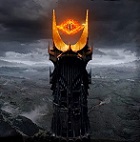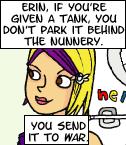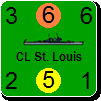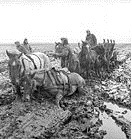Peltonx
Posts: 7250
Joined: 4/9/2006
Status: offline

|
Table A. Red Army Personnel Losses, 22 June 1941-9 May 1945
RED ARMY PERSONNEL LOSSES
Period Average Strength (monthly) Killed or Missing Wounded and Sick Total
1941, 3d Quarter 3,334,000 2,067,801 676,964 2,744,765
1941, 4th Quarter 2,818,500 926,002 637,327 1,563,329
Yearly Total 3,024,900 2,993,803 1,314,291 4,308,094
1942, 1st Quarter 4,186,000 619,167 1,172,274 1,791,441
1942, 2d Quarter 5,060,300 776,578 702,150 1,478,728
1942, 3d Quarter 5,664,600 1,141,991 1,276,810 2,418,801
1942, 4th Quarter 6,343,600 455,800 936,031 1,391,831
Yearly Total 5,313,600 2,993,536 4,087,265 7,080,801
1943, 1st Quarter 5,892,800 656,403 1,421,140 2,077,543
1943, 2d Quarter 6,459,800 125,172 471,724 596,896
1943, 3d Quarter 6,816,800 694,465 2,053,492 2,747,957
1943, 4th Quarter 6,387,200 501,087 1,560,164 2,061,251
Yearly Total 6,389,200 1,977,127 5,506,520 7,483,647
1944, 1st Quarter 6,268,600 470,392 1,565,431 2,035,823
1944, 2d Quarter 6,447,000 251,745 956,828 1,208,573
1944, 3d Quarter 6,714,300 430,432 1,541,965 1,972,397
1944, 4th Quarter 6,770,100 259,766 1,026,645 1,286,411
Yearly Total 6,550,000 1,412,335 5,090,869 6,503,204
1945, 1st Quarter 6,461,100 468,407 1,582,517 2,050,924
1945, 2d Quarter 6,135,300 163,226 609,231 772,457
Yearly Total 6,330,880 631,633 2,191,748 2,823,381
Wartime Totals 10,008,434 18,190,693 28,199,127
Total Armed Forces Losses by Category
Number (%)
Irrevocable
Killed in battle or died during evacuation 5,187,190 (17.5)
Died of wounds in hospital 1,100,327 (3.7)
Died of illness (nonbattle) 541,920 (1.8)
Missing in action or captured 4,455,620 (15.1)
Total 11,285,057 (38.1)
Sanitary
Wounded 15,205,592 (51.3)
Sick 3,047,675 (10.3)
Frostbitten 90,881 (0.3)
Total 18,344,148 (61.9)
Total armed forces losses 29,629,205
Note: Red Army personnel losses include those of the air force.
Table B. Soviet Wartime Strength and Losses
PERSONNEL LOSSES MATERIEL LOSSES
Operation Strength Killed or Missing Wounded Total Tanks and SP Guns Artillery Aircraft
First Period of War (22 June 41-8 Nov. 42)
Baltic Defense (22 June-7 Sept. 41) 498,000 75,202 13,284 88,486 2,523 3,561 990
Defense in Belorussia (22 June-7 Sept. 41) 627,300 341,073 76,717 417,790 4,799 9,427 1,777
Defense in Ukraine (22 June-6 July 41) 864,600 172,323 69,271 241,594 4,381 5,806 1,218
Northern Defense (29 June-10 Oct. 41) 358,390 67,265 68,448 135,713 546 540 64
Kiev Defense (7 July-26 Sept. 41) 627,000 616,304 84,240 700,544 411 28,419 343
Defense in Moldavia (1 July-26 July 41) 364,700 8,519 9,374 17,893
Leningrad Defense (10 July-30 Sept. 41) 517,000 214,078 130,848 344,926 1,492 9,885 1,702
Odessa Defense (5 Aug.-16 Oct. 41) 34,500 16,578 24,690 41,268
Battle of Smolensk (10 July-10 Sept. 41) 581,600 214,078 130,848 344,926 1,348 9,290 903
El'nia Offensive (30Aug.-8 Sept. 41) 103,200 10,701 21,152 31,853
Donbas-Rostov Defense (29 Sept.-16 Nov. 41) 541,600 143,313 17,263 160,576 101 3,646 240
Tikhvin Defense (16 Oct.-18 Nov. 41) 135,700 22,743 17,846 40,589
Crimean Defense (18 Oct.-16 Nov. 41) 235,600 48,438 15,422 63,860
Moscow Defense (30 Sept.-5 Nov. 41) 1,250,000 514,338 143,941 658,279 2,785 3,832 293
Tikhvin Offensive (10 Nov. -30 Dec. 41) 192,950 17,924 30,977 48,901 70 2,293 82
Rostov Offensive (17 Nov.-2 Dec. 41) 349,000 15,264 17,847 33,111 42 1,017 42
Sevastopol Defense (30 Oct. 41-4 July 42) 52,000 156,800 43,601 200,481
Moscow Offensive (5 Dec. 41-7 Jan. 42) 1,021,700 139,586 231,369 370,955 429 13,350 140
Kerch-Feodosiia Offensive (25 Dec. 41-2 Jan. 42) 82,500 32,453 9,482 41,935 35 133 39
Liuban' Offensive (7 Jan. -30 April 42) 325,700 95,064 213,303 308,367
Demiansk Offensive (7 Jan. -20 May 42) 105,700 88,908 156,603 245,511
Rolkhov Offensive (8 Jan. -20 April 42) 317,000 21,319 39,807 61,126
Rzhev-Viaz'ma Offensive (8 Jan.-20 April 42) 1,059,200 272,320 504,569 776,889 957 7,296 550
Toropets-Kholm Offensive (9 Jan. -6 Feb. 42) 122,100 10,400 18,810 29,210
Barvenkovo-Lozovaia Offensive (18 Jan. -31 Jan. 42) 204,000 11,095 29,786 40,881
Kerch Defense (8 May-19 May 42) 249,800 162,282 14,284 176,566
Khar'kov Offensive (12 May-29 May 42) 765,300 170,958 106,232 277,190
Liuban' Relief (13 May-10 July 42) 231,900 54,774 39,977 94,751
Voronezh-Vorosh Defense (28 June-24 July 42) 1,310,800 370,522 197,825 568,347 2,436 13,716 783
Stalingrad Defense (17 July-18 Nov. 42) 547,000 323,856 319,986 643,842 1,426 12,137 2,063
N. Cauc. Defense (25 July-31 Dec. 42) 603,200 192,791 181,120 373,911 990 5,049 644
Rzhev-Sychevka Offensive (30 July-23 Aug. 42) 345,100 51,482 142,201 193,683
Siniavinsk Offensive (19 Aug.-10 Oct. 42) 190,000 40,085 73,589 113,674
Second Period of War (19 Nov. 42-31 Dec. 43)
Stalingrad Offensive (19 Nov. 42-2 Feb. 43) 1,143,500 154,885 330,892 485,777 2,915 3,591 706
Rzhev-Sychevka Offensive (24 Nov.-16 Dec. 42) 1,400,000 260,000 500,000 760,000 1,847 1,100 120
Velikie Luki Offensive (24 Nov. 42-20 Jan. 43) 86,700 31,674 72,348 104,022
N. Cauc. Offensive (1 Jan. -4 Feb. 43) 1,145,300 69,627 84,912 154,539 220 895 236
Leningrad Offensive (Dec. 42-30 Jan. 43) 302,800 33,940 81,142 115,082 41 417 41
Voronezh-Khar'kov Offensive (13 Jan. -3 April 43) 502,400 55,475 98,086 53,561 1,023 2,106 307
Krasnodar Offensive (9 Feb. -24 May 43) 390,000 66,814 173,902 240,176
Demiansk Offensive (15 Feb.-28 Feb. 43) 327,600 10,016 23,647 33,663
Rzhev-Viaz'ma Offensive (Feb.-31 March 43) 876,000 38,862 9,715 138,577
Khar'kov Defensive (April-25 March 43) 345,900 45,219 41,250 86,569 322 3,185 110
Kursk Defensive (May-23 July 43) 1,272,700 70,330 107,517 177,847 1,614 3,929 459
Orel Offensive (12 July-18 Aug. 43) 1,287,600 112,529 317,361 429,890 2,586 892 1,104
Mga Offensive, Leningrad (22 July-22 Aug. 43) 253,300 20,890 59,047 79,937
Belgorod- Khar'kov Offensive (March-23 Aug. 43) 1,144,000 71,611 183,955 255,566 1,864 423 153
Smolensk Offensive (7 Aug. -2 Oct. 43) 1,252,600 107,645 343,821 451,466 863 243 303
Donbas Offensive (13 Aug.-22 Sept. 43) 1,011,900 66,166 207,356 273,522 886 814 327
Chernigov-Poltava Offensive (26 Aug. -30 Sept. 43) 1,581,300 102,957 324,995 427,952 1,140 916 269
Briansk Offensive (1 Sept.-3 Oct. 43) 530,000 13,033 43,624 56,657
Novorossiisk-Taman' Offensive (10 Sept.-9 Oct. 43) 317,400 14,564 50,946 65,510 111 70 240
Lower Dnepr Offensive (26 Sept.-20 Dec. 43) 1,506,400 173,201 581,191 754,392 2,639 3,125 430
Melitopol' Offensive (26 Sept.-5 Nov. 43) 555,300 42,760 155,989 198,749
Nevel'-Gorodok Offensive (6 Oct.-31 Dec. 43) 198,000 43,551 125,351 168,902
Zaporozhe Offensive 150,500 3,443 14,265 17,708
Kerch-Eltigen Offensive (31Oct.-11 Dec. 43) 150,000 6,985 20,412 27,397
Kiev Offensive (March-13 Nov. 43) 671,000 6,491 24,078 30,569 271 104 125
Gomel'-Rechitsa Offensive (10 Nov. -30 Nov. 43) 761,300 21,650 66,556 88,206
Kiev Defensive (13 Nov.-22 Dec. 43) 730,000 26,443 61,030 87,473
Third Period of War (1 Jan. 44-9 May 45)
Right Bank of Ukraine Offensive (24 Dec. 43-17 April 44) 2,406,100 270,198 839,330 1,109,528 4,666 7,532 676
Zhitomir-Berdichev Offensive (24 Dec. 43-14 Jan. 44) 831,000 23,163 76,855 100,018
Kalinkovichi-Mozyr' Offensive (8-30 Jan. 44) 232,600 12,350 43,807 56,157
Korsen'-Shevchenkovskii Offensive (24 Jan. -17 Feb. 44) 336,700 24,286 55,902 80,188
Rogachev-Zhlobin Offensive (21-26 Feb. 44) 232,000 7,164 24,113 31,277
Leningrad-Novgorod Offensive (14 Jan. -1 April 44) 822,100 76,686 237,267 313,953 462 1,832 260
Crimean Offensive (8 April-12 May 44) 462,400 17,754 67,065 84,819 171 521 179
Vyborg-Petrozavodsk Offensive (10 June - 9 Aug. 44) 451,500 23,674 72,701 96,375 294 489 311
Belorussian Offensive (23 June-29 Aug. 44) 2,441,600 180,040 590,848 770,888 2,957 2,447 822
Rezekne-Dvinsk Offensive (10-27 July 44) 391,200 12,880 45,115 57,995
Pskov-Ostrov Offensive (11-31 July 44) 258,400 7,633 25,951 33,584
L'vov-Sandomierz Offensive (13 July-29 Aug. 44) 1,002,200 65,001 224,295 289,296 1,269 1,832 289
Madona Offensive (1-28 Aug. 44) 390,000 14,669 50,737 65,406
Tartu Offensive (10 Aug.-6 Sept. 44) 272,800 16,292 55,514 71,806
Iassy-Kishinev Offensive (20-29 Aug. 44) 1,314,200 13,197 53,933 67,130 75 108 111
East Carpathian Offensive (8 Sept.-28 Oct. 44) 378,000 28,473 103,437 131,910 478 962 192
Baltic Offensive (14 Sept.-24 Nov. 44) 1,546,400 61,468 218,622 280,090 522 2,593 779
Belgrade Offensive (28 Sept.-20 Oct. 44) 300,000 4,350 14,488 12,740 53 184 66
Petsamo-Kirkenes Offensive (7-29 Oct. 44) 133,500 6,084 15,149 21,233 21 40 62
Debrecen Offensive (6-28 Oct. 44) 698,200 19,713 64,297 84,010
Goldap Offensive (16-30 Oct. 44) 377,300 16,819 62,708 79,527
Budapest Offensive (29 Oct. 44-13 Feb. 45) 719,500 80,026 240,056 320,082 1,766 4,127 293
Vistula-Oder Offensive (12 Jan. -3 Feb. 45) 2,203,600 43,476 150,715 194,191 1,267 374 343
West. Carpathian Offensive (12 Jan.-18 Feb. 45) 593,000 19,080 72,852 91,932 359 753 94
East Prussian Offensive (13 Jan.-25 April 45) 1,669,100 126,464 458,314 584,778 3,525 1,644 1,450
Lower Silesian Offensive (8-24 Feb. 45) 980,000 23,577 75,809 99,386
East Pomerania Offensive (10 Feb.-4 April 45) 996,100 55,315 179,045 234,360 1,027 1,005 1,073
Balaton Defensive (6-15 March 45) 465,000 8,492 24,407 32,899
Upper Silesian Offensive (15-31 March 45) 408,400 15,876 50,925 66,801
Morava-Ostrava Offensive (10 March-5 May 45) 317,300 23,964 88,657 112,621
Vienna Offensive (16 March-15 April 45) 745,600 41,359 136,386 177,745 603 764 614
Bratislava-Brno Offensive (25 March-5 May 45) 272,200 16,933 62,663 79,596
Berlin Offensive (16 April - 8 May45) 2,062,100 81,116 280,251 361,367 1,997 2,108 917
Prague Offensive (6-11 May 45) 2,028,100 11,997 40,501 52,498 373 1,006 80
Manchuria Offensive (9 Aug. - 2 Sept. 45) 1,685,500 12,103 24,550 36,653 78 232 62
German Sources:
Earl F. Ziemke, From Stalingrad to Berlin: The German Defeat in the East (Washington, D.C.: U.S. Army Center of Military History, 1968), 9, 18-19,144, 412-413, 457, 498.
Fremde Heere Ost comparative strength reports for 1.4. 43; 20. 7.43; 14. 10.43; 1.5. 44; 1.6.44; 1. 8.44; 1.9.44; andl. 11.44.
Soviet Sources:
G. F. Krivosheev, Grif sekretnosti sniat: Poteri vooruzhennykh sil SSSR v voinakh, boevykh deistviiahk, i voennykh konfliktakh [Losses of the armed forces of the USSR in wars, combat actions, and military conflicts] (Moscow: Voenizdat, 1993), 152-153.
Voennoe iskusstva vo vtoroi mirovoi voine (Moscow: Voenizdat, 1973), 171. Textbook, for internal use only by the Voroshilov Academy of the General Staff. Soviet strength data is accurate, but German strength is grossly inflated.
TsPA UML (Central Party Archives of the Institute of Marxism and Leninism), which include:
_____________________________
Beta Tester WitW & WitE
|
 Printable Version
Printable Version













 In other words, the Soviets could have perfectly produced them. But if the Americans were sending them they could concentrate on tanks. A help? Yes, indeed. But don't make it sound as if these trucks are everything.
In other words, the Soviets could have perfectly produced them. But if the Americans were sending them they could concentrate on tanks. A help? Yes, indeed. But don't make it sound as if these trucks are everything.  Not to mention the British without the many colonies.
Not to mention the British without the many colonies. 




 New Messages
New Messages No New Messages
No New Messages Hot Topic w/ New Messages
Hot Topic w/ New Messages Hot Topic w/o New Messages
Hot Topic w/o New Messages Locked w/ New Messages
Locked w/ New Messages Locked w/o New Messages
Locked w/o New Messages Post New Thread
Post New Thread